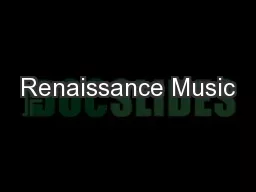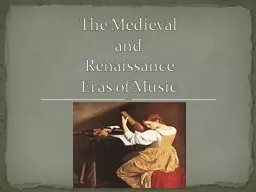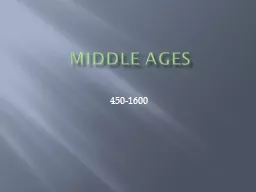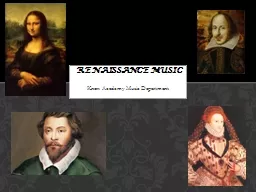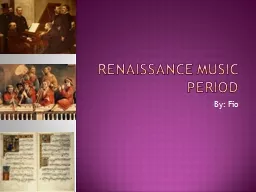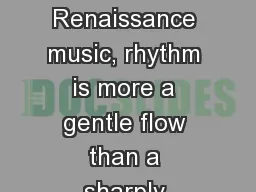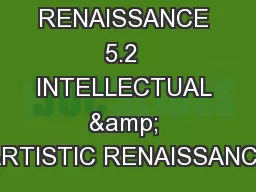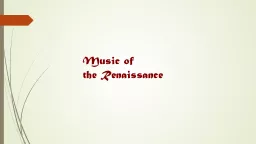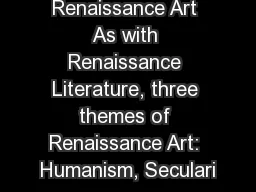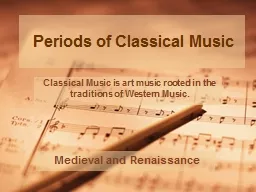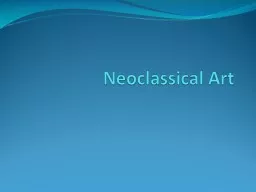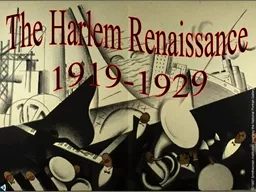PPT-Renaissance Music
Author : giovanna-bartolotta | Published Date : 2017-10-20
Palestrinas Pope Marcellus Mass circa 1562 By the end of class you should to know Terms Sacred Secular Harmony Polyphony Eleison Music Forms Mass Madrigal Motet
Presentation Embed Code
Download Presentation
Download Presentation The PPT/PDF document "Renaissance Music" is the property of its rightful owner. Permission is granted to download and print the materials on this website for personal, non-commercial use only, and to display it on your personal computer provided you do not modify the materials and that you retain all copyright notices contained in the materials. By downloading content from our website, you accept the terms of this agreement.
Renaissance Music: Transcript
Download Rules Of Document
"Renaissance Music"The content belongs to its owner. You may download and print it for personal use, without modification, and keep all copyright notices. By downloading, you agree to these terms.
Related Documents

